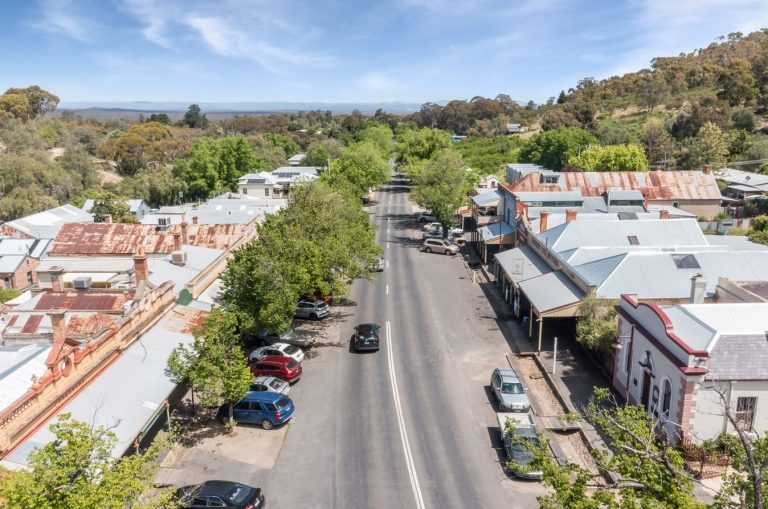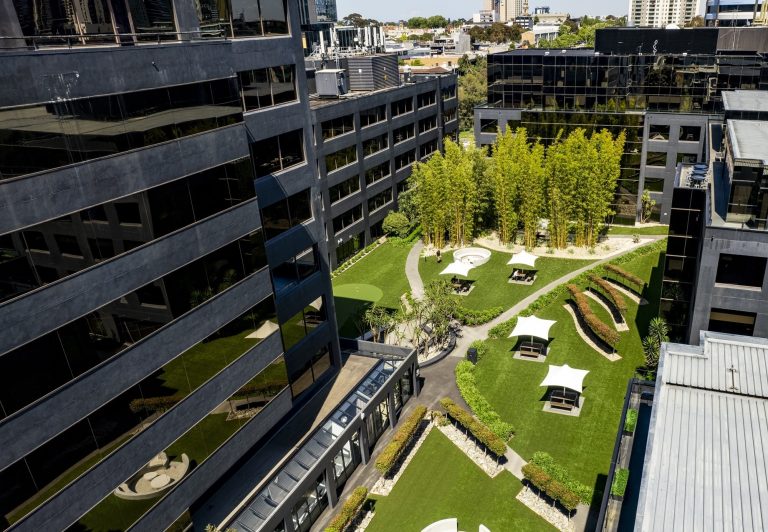How much office space do I need?

The Building Code of Australia requires a minimum of 10 sqm per person in offices, but the correct space size is intangible, depending on your business type and staff needs.
When trying to decide how much office space you need, consider your business’s short and long-term needs and plan out a strategy for these requirements.
It’s also important to check with your landlord as to what changes can be made within the confines of your lease agreement.
Industry experts explain why.
What is a good size for an office?

The Building Code of Australia requires a minimum of 10 sqm per person in offices. Picture: Getty
While the Building Code’s 10sqm minimum per employee is a good place to start, CBRE’s Louise Munro believes a ratio of one person per 8-12sqm is more reasonable.
The project management director added that other factors also had to be taken into account as they could impact and constrain required space.
These factors can include mechanical services such as air-conditioning, fire and emergency escapes, and amenities.
“Your amenities will be designed to cater for a certain number of people and along with your fire stair width, is usually where your constraint is,” Ms Munro explained.
“A wider fire stair is going to allow you to have a higher density on the floor.
“Your mechanical services will also be aligned to a certain density.”
Ray White Commercial Gold Coast agent, Luke Boulden, concurred the majority of office space ratios are 1:12sqm but could even stretch up to 1:14sqm.
“I believe OH&S recently indicated a ratio of 1:6sqm but that’s just silly as it crams and squashes up everyone,” he said.
“But 1:10sqm is the baseline ratio that everyone’s going to work from.”
How much space do I need?
Start with a strategic brief of how much space you’ll need now and in the future, especially when it comes to staff growth and their requirements.
1. Consider your commercial lease
A lease term’s structure should reflect what your business is projecting in terms of growth, Mr Boulden explained.
“Be conscious of what your lease term looks like,” he said.
“Is the lease term pro-rated or does it work in unison with what your projected growth is?
“If it doesn’t, there’s no point going into a larger premise and securing it for 1o or five years only to have the lease hinder your capacity to grow.”
2. Are your staff numbers growing?

Prepare in advance for staff numbers to grow and the requirements to change. Picture: Getty
A strategic brief will also assist with staff numbers and potential growth, according to Ms Munro.
“We typically work through with the client and map out what their headcount will be over the period of the lease and then plan for that,” she said.
“So, if you’re signing a 10-year lease, what do you expect your staff numbers to be over that period and how do you think you’re going to grow?
“This might not necessarily mean that you build an office with 40 desks in there just because you’ve got 20 staff on day one, and you think you might grow to 40 staff by the end of the five years.
“But you might develop a strategy in which every individual at the start of the lease has their own desk but you also build in lockers so that in a few years time, you can go to shared desks.”
3. How has COVID changed office spaces?
After working from home since the pandemic began, Ms Munro believes it’s now highly unlikely that people will return full-time to their offices.
“You might have certain individuals in your business that would prefer to work in the office full-time, but you’re not going to have everyone doing that,” she said.
“The average that we’re looking at at the moment is probably three days in the office and two days at home.
“So, this means you would need to develop a strategy of how your office space will go over time.”
Ms Munro said some office businesses might prefer a shared desk arrangement or have spots available where desks can be added.
“We often develop plans of where we can add additional desks and increase density,” she said.
Ms Munro added that post-COVID, many people were choosing to return to offices to collaborate and socialise rather than for individual work.
“This reduces the number of desks and increases the number of meeting spaces and spaces to connect,” she said.
“A lot of businesses are now giving their offices a more clubhouse feel, making it a destination to draw people back in and making it different from home rather than the traditional trend of making your office feel like the home.”
Different needs for different businesses

Creative businesses tend towards more varied collaboration spaces. Picture: Getty
Different types of business will dictate the amount of floor space you need and if fit-out changes are allowed under the building code, the world is your oyster, according to Mr Boulden.
“This is within reason and as long as there are not too many implications on any structural changes,” he said.
Mr Boulden added that many office-based corporations were transitioning to open-plan designs, which was following in the footsteps of creative agencies.
“I would suggest that on a footprint basis, 90% of office designs nowadays would be very comparable to one another,” he said.
1. Call centres
These offices would probably be designed for a high-density staff network, Ms Munro explained.
“Typically, it’s probably the one person in 10sqm outlook or you might sometimes get down to one in 8sqm,” she said.
“But there is also the need for separation because staff are talking on the phone the whole time so space from an acoustic perspective is important.
“We often find call centres have more screens up to stop the noise transfer between desks.”
2. Corporate and executive
“Legal firm offices are probably closer to a one in 16sqm density,” Ms Munro said.
“If the offices are going for an open-plan design, it might be a little bit lower, such as one in 14sqm.
“But we still find that legal fit-outs are more spacious and they have bigger workstations or more space between the workstations.”
3. Creative
“Creative businesses have a bit more variance in work styles,” Ms Munro explained.
“So it’s not just desks or single offices but more varied collaboration spaces such as tables or more agile, stand up meeting areas.
“Typically, we find creatives need to have whiteboards in every location.
“Staff calibration is also more important in these businesses as there is less individual work and more of a focus on working with others, whether that’s one-on-one with other people or in a group.”







